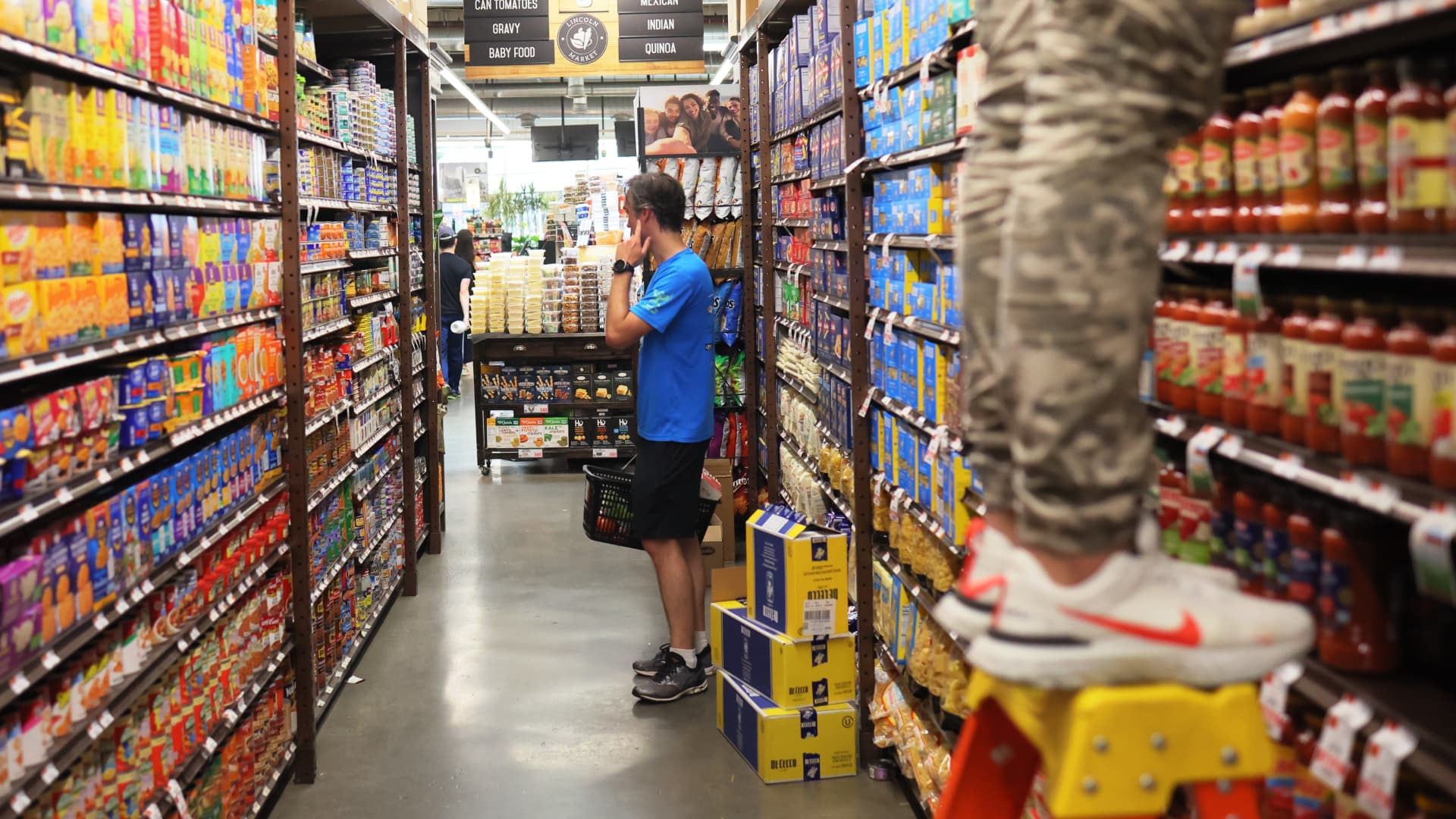The inflation rate cooled in May to its lowest annual rate in more than two years, likely taking pressure off the Federal Reserve to continue raising interest rates, the Labor Department reported Tuesday.
The consumer price index, which measures changes in a multitude of goods and services, increased just 0.1% for the month, bringing the annual level down to 4% from 4.9% in April. That 12-month increase was the smallest since March 2021, when inflation was just beginning to rise to what would become the highest in 41 years.
Excluding volatile food and energy prices, the picture wasn’t as optimistic.
So-called core inflation rose 0.4% on the month and was still up 5.3% from a year ago, indicating that while price pressures have eased somewhat, consumers are still under fire.
All of those numbers were exactly in line with the Dow Jones consensus estimates.
A 3.6% slide in energy prices helped keep the CPI gain in check for the month. Food prices rose just 0.2%.
However, a 0.6% increase in shelter prices was the biggest contributor to the increase for the all-items, or headline, CPI reading. Housing-related costs make up about one-third of the index’s weighting.
Elsewhere, used vehicle prices increased 4.4%, the same as in April, while transportation services were up 0.8%.
Markets showed little reaction to the release, despite its expected prominence in the decision the Federal Reserve will make at this week’s meeting regarding interest rates. Stock market futures were slightly positive, though Treasury yields fell sharply.
Pricing did shift notably in the fed funds market, with traders pricing in a 93% chance the Fed will not raise benchmark rates when its meeting concludes Wednesday.
“The encouraging trend in consumer prices will provide the Fed some leeway to keep rates unchanged this month and if the trend continues, the Fed will not likely hike for the rest of the year,” said Jeffrey Roach, chief economist at LPL Financial.
The tame CPI reading was good news for workers. Average hourly earnings adjusted for inflation rose 0.3% on the month, the Bureau of Labor Statistics said in a separate release. On an annual basis, real earnings are up 0.2% after running negative for much of the inflation surge that began about two years ago.
The consumer price index report featured a growing discrepancy between the core and headline numbers. The all-items index usually runs ahead of the ex-food and energy measure, but that hasn’t been the case lately.
The year-over-year discrepancy between the two measures stems from gas prices that were surging at this time in 2022. Ultimately, prices at the pump would exceed $5 a gallon, which had never happened before in the U.S. Gasoline prices have fallen 19.7% over the past year, Tuesday’s BLS report showed.
Food prices, however, were still up 6.7% from a year ago, though eggs fell 13.8% in May and are now slightly negative on a 12-month basis after surging in previous months. Shelter prices have risen 8% and transportation services are up 10.2%. Airline fares also have been in retreat, declining 13.4% year over year.








































